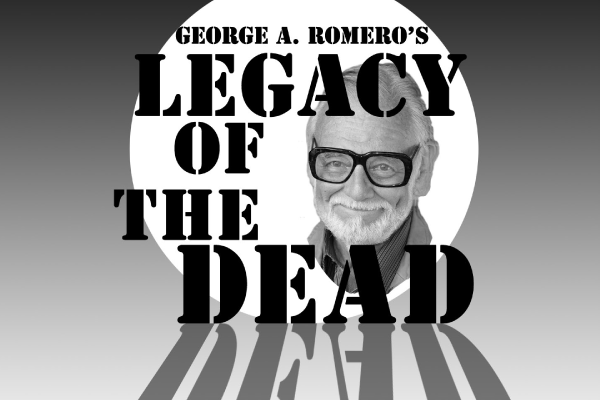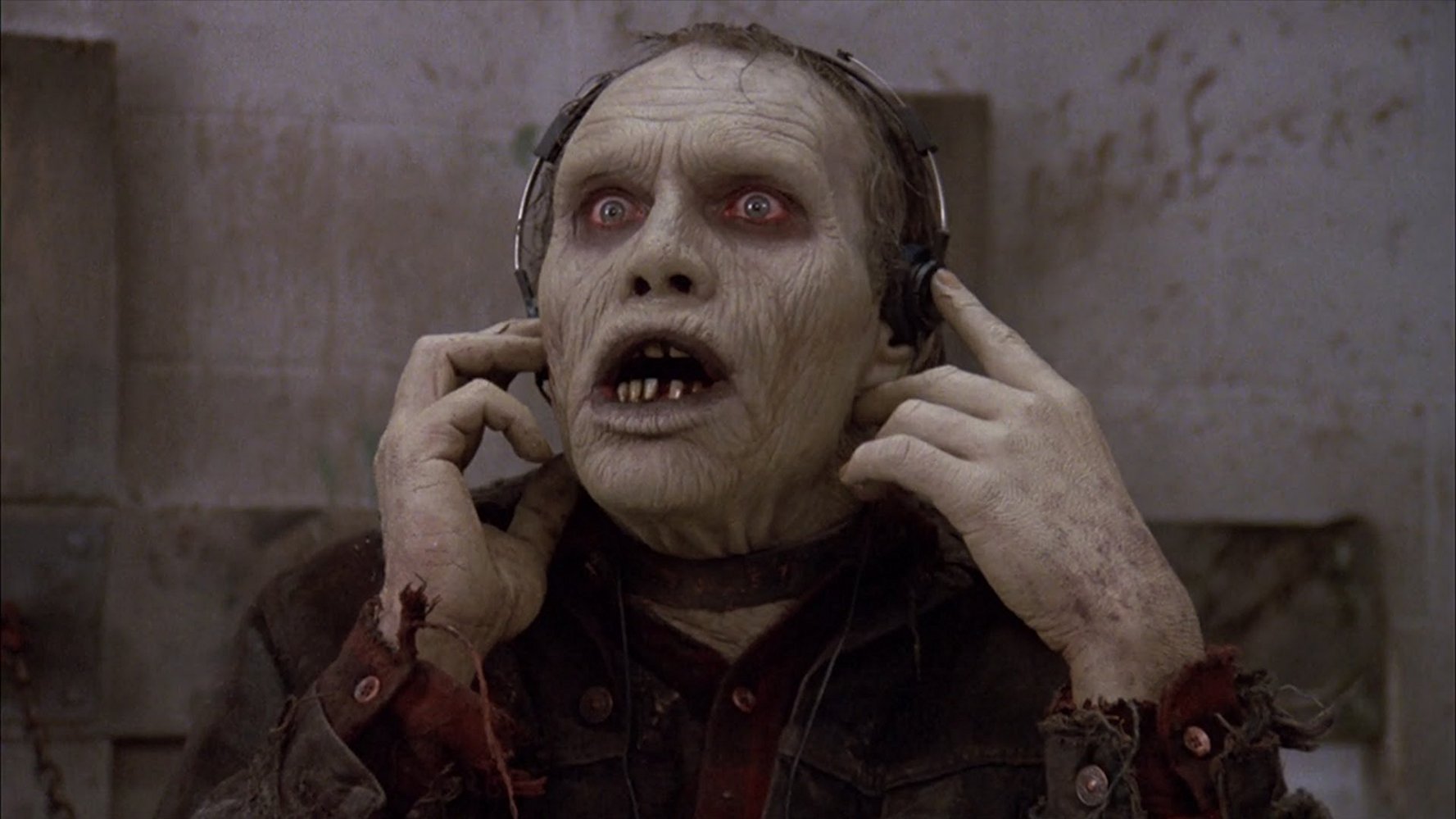
By the mid 1980s in America, it was very clear that the manufacturing economy that had led the United States to unprecedented economic heights was crumbling like a corroded steel bridge. Thousands of blue-collar workers were losing their jobs; across the Midwest and Northeast, from Cleveland and Detroit to Pittsburgh and beyond. Politicians and business owners made vague promises of revival, but the industry was already transitioning into newer, leaner, automated forms of manufacturing that required higher-precision technology, but less manpower. This devastating series of events left many people helpless and hopeless, unable to find new jobs near their hometowns, and led to a mass exodus of people to North Carolina, Florida, Texas, Arizona, and other Sun Belt states. Many were forced to start over and slowly rebuild their 'American Dream.' Countless others' dreams simply died. George Romero's "Day of the Dead" (1985) pays homage to those thousands of blue-collar workers in the form of one, particular undead: Bub.

Internet Movie Database (N.D.). 'Sherman Howard as 'Bub' in Day of the Dead' (1985).
Bub is featured in Day of the Dead to gain the audience's empathy. We are not given any of Bub's backstory, but there are some contextual clues from which we can draw conclusions. Bub's clothing is an indicator that he may have enjoyed a simple, productive life. His red flannel shirt and denim jacket indicate that Bub may have lived the life of a Pennsylvanian steelworker, Ohioan factory worker, or maybe even that of a coal miner in West Virgina or Kentucky. There is also the suggestion that before Bub met his untimely death (and subsequent rebirth) he may have moved to the Sun Belt state of Florida to start his life over again, like so many of his blue-collar brothers. Yet, instead of striving to recreate his 'American Dream,' Bub becomes just another of the thousands, if not millions, of zombies that roam the United States. In this case, it can be argued that Bub has become yet another version of blue collar worker as he and others are left to fend for themselves in this zombie-eat-human world where the American military continues to hold tenuous control of the system.
Perhaps as an homage to those blue collar workers stuck in this failing American economic system, Bub is chained and controlled by a mad scientist (Dr. Logan aka 'Frankenstein'), who is employed by the American military. These chains symbolize those of the military-industrial system that locked millions of workers into a lifestyle that gave them little economic or political freedom. Even though the zombie apocalypse has upended the old system, Bub finds himself again a prisoner, this time in a new system hell-bent on establishing a way to capitalize on the unskilled labor and domestication of zombies. The sole purpose of 'Frankenstein's' experiments is to find a way to train Bub, then subsequent zombies for the benefit of the military and any surviving the elites. Frankenstein states, 'Knowing what they are, we can begin to approach them properly; condition them and control them' (emphasis added). Even in times of chaos and crisis, science fuels not only the military, but also industry, driven by greed for profit and control, with little in common with those they dominate—zombie or average worker.
'Frankenstein's' experiments and (re)conditioning aim to help Bub remember his former life and ability to work. These experiments include testing out a razor, glancing at a book, saluting the military, and firing an empty gun. These last two actions are triggered by the presence of Captain Rhodes and his fellow military personnel. Initially, Bub salutes the military out of respect and Frankenstein asks Rhodes to return the salute. Rhodes, representing the power elites, responds, 'You want me to salute that walking pile of puss? Salute my ass.' Rhodes disdains the zombie, viewing them as less than human and unworthy of respect; his only interest is to control or better, destroy, Bub and his fellow undead. When Rhodes returns to aim a weapon at Bub, the zombie shrieks and cowers in terror. Although undead, Bub has some consciousness and memory, and clearly reacts out of fear for his existence. But his cowering from Rhodes also means that he stands down, returning to the line as a good worker should. Rhodes symbolizes two elites: the strong arm of the American military and the industry magnates that are desperately trying to keep their workers at heel. Although Bub falls in, there is clear animosity towards Rhodes and the elites when Bub aims his gun at them. It is a sign of the potential organization of the zombies that threatens the status quo.
Eventually, the mental exhaustion and internal frictions of the humans leads to a breakdown in order, and the zombie (working) masses infiltrate and overrun the base. Bub escapes during this invasion to discover that his mentor, his father-figure, Frankenstein, has been shot. During his reconditioning, Bub begins to recognize that the military elites remain responsible for his imprisonment and the continued subjugation of his fellow zombies. Bub recovers a loaded gun, tracks down Rhodes and exacts his revenge. After wounding and crippling Rhodes, Bub leaves him to be devoured by the invading undead while Bub sarcastically salutes him one more time. The zombie (workers) rebellions has begun!
Bub is the first zombie in Romero's "Dead" series that exhibits emotion and intelligence. By the end of the film, we can imagine that Bub's experiences might lead him to spearhead the zombie revolution. Although this revolution is in its infancy, Bub's work is carried forward in Romero's next movie, "Land of the Dead" (2005), when Bub passes the torch to Big Daddy who takes the worker's revolution to the next level to invade the human outpost and destroy the evil, corporate tyrant, Kaufman (played by Dennis Hopper). As a former Pittsburgher, George Romero was quite aware of the history of blue-collar workers and the manufacturing industries that took advantage of these people for decades. He pays tribute to them through Bub, who may help his fellow zombies begin to realize that they have been taken advantage of and can resist and overcome this domination. All great revolutions have a beginning, and Bub is the genesis of the zombie revolution in "Day of the Dead."

Romero, baby daughter, Christina, and Howard Sherman as Bub. Photograph by Richard & Susan Golomb. The Zombies That Ate Pittsburgh by Paul R. Gagne, Dodd, Mead & Company, New York, p. 156.
by Ryan Splenda, Liaison Librarian
